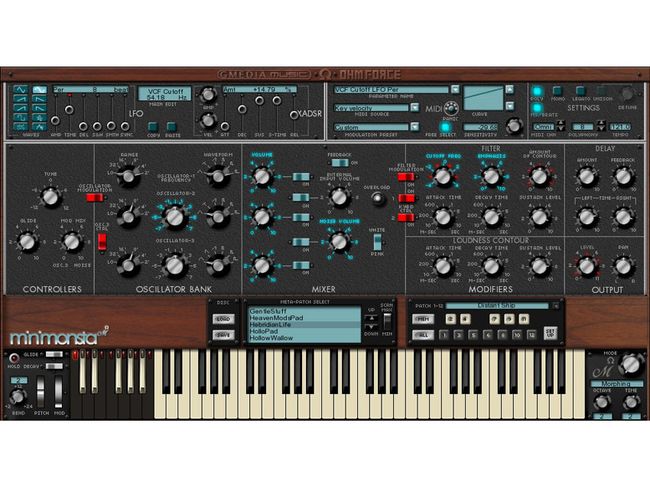


Let’s take the Level control all the way up to 0.0 dB, and in the Pitch column click up in the Interval box. In the bottom left corner of Octavox, dial down the Mix control to 42% to bring back in the dry signal. We can hear that we’ve lost a bit of volume now as the effect is 100% wet. We can do this in the section to the right of the Notation Grid, setting our key to B and our scale to Natural Min (as per our synth hook). It’s important at this stage to set the key of Octavox so that the extra voices we add play in the same scale as our original synth hook. This will leave us with just one voice activated.
#MONARK VST PATCH#
Head to the patch browser menu and select the ‘Default’ patch at the bottom to reset Octavox. With the default patch that loads up we’re instantly in melodic techno territory: To proceed, we load an instance of Octavox on our synth channel. One big advantage of using Octavox is that we have more control over aspects of each individual voice, such as level and pan controls, and we also have the option to add a delay to individual voices. If you are familiar with Ableton’s Chord MIDI effect or Logic’s Chord Trigger, Octavox works in a similar way but in audio, adding extra voices that can be pitched to musical intervals. With our sound set up, we can now use the Octavox Harmonizer pitch-shit effect to take things to a completely different level. We now have a warm, analogue-sounding bass hook, with some detuning on the oscillators helping to thicken the sound.

We turn the volume of Oscillator 2 up, and on the Filter Contour section we check the switch underneath the control, changing it from – to +, reversing the filter modulation. We take the Range of Oscillator 2 down to 32’, and we set the Frequency of Oscillatorand 2 and 3 to 0, though slightly detuned. We load the ‘010 Half Life’ preset from the ‘001 Bass’ list of Bass presets, then tweak the sscillator section slightly, taking Oscillator 1 up an octave by setting the Range control to 32’. We begin by loading the Monark ensemble within an instance of Reaktor 5 (Monark being a Reaktor instrument). Monark is a faithful Minimoog emulation, and thus is a monophonic synthesiser and a great example of when a technique like this is very effective. Here’s the MIDI we’ve used for this synth loop, a simple hook in the key of B Minor:įor this walkthrough we’ll be using Native Instruments’ Monark synth. We’ll begin with this monophonic synth sound: Īnd using the Eventide Octavox Harmonizer we’ll create this much more complex part:
#MONARK VST HOW TO#
Synth Secrets is a series of programming tutorials in which we show how to make a range of classic and new synth sounds using plugins such as Massive, Sylenth and Diva.įor this instalment of Synth Secrets we’re going to pick up where we left off the other week, looking at processing our synth sounds using Eventide’s powerful Anthology X plugin suite.


 0 kommentar(er)
0 kommentar(er)
